Celebrating World Whale Day – 8 Fascinating Facts About Whales
Every year, on the third Sunday of February, people around the world come together to celebrate World Whale Day – a day dedicated to raising awareness about these extraordinary marine mammals. It’s an opportunity to reflect on the beauty and importance of whales in our oceans.
From the colossal blue whale, the largest animal on Earth, to the acrobatic humpback whale, and the highly intelligent orcas, each species has unique adaptations that continue to amaze scientists and nature lovers alike. Even the elusive Cuvier’s beaked whale, known for its record-breaking deep dives, reminds us of how much there is still to learn about life beneath the waves.
Whales play a crucial role in marine ecosystems, yet they face ongoing threats from climate change, ocean pollution, and human activity. World Whale Day is not just a celebration – it’s a call to protect and preserve these incredible creatures for future generations.
In honour of these gentle giants, here are eight fascinating facts about whales that highlight just how remarkable they truly are.
Jump to Section
- 1 1. Whales are mammals, not fish
- 2 2. Blue whales have a heart the size of a small car
- 3 3. Orcas are highly intelligent and have cultural traditions
- 4 4. Some whales experience menopause, just like humans
- 5 5. A Narwhal’s tusk is actually a tooth
- 6 6. Whales make nets out of bubbles to help them catch prey
- 7 7. Whales communicate by song
- 8 8. Orca whales are actually dolphins
- 9 Conservation Challenges
- 10 Looking to the Future
- 11 Thanks for reading…
1. Whales are mammals, not fish
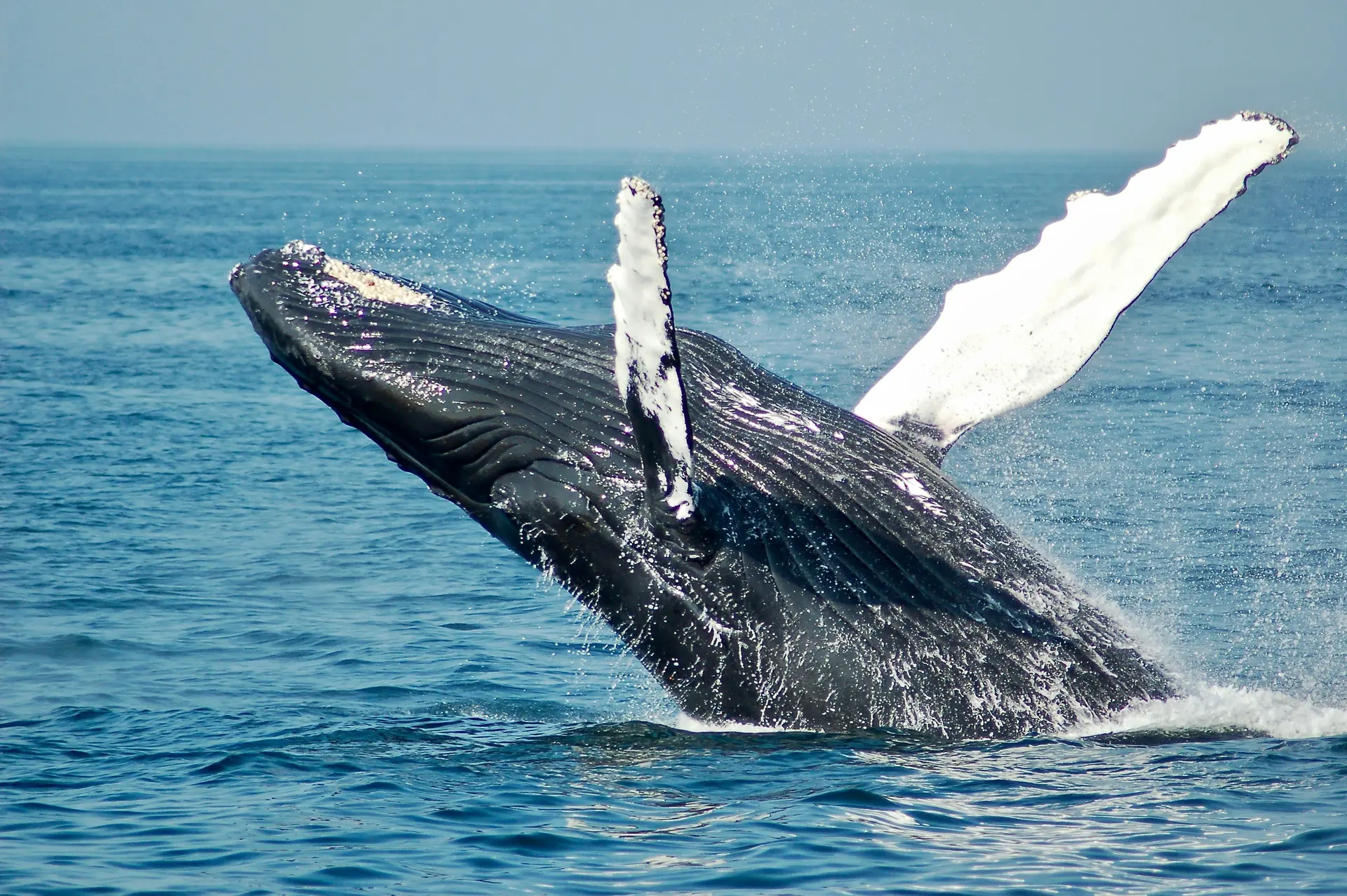
Graceful Humpback Takes Flight. Photo by Todd Cravens
One of the first things to know about whales is that they are mammals, not fish. This means they share many characteristics with land mammals, including breathing air, giving live birth, and feeding their young milk. Unlike fish, which have gills to extract oxygen from water, whales have lungs and must surface regularly to breathe. Most species breathe through blowholes on the top of their heads, and when they exhale, it can create a spout of misty air that can be seen from quite a distance.
Whales are typically classified into two main groups: baleen whales and toothed whales. Baleen whales, such as the blue whale, humpback whale, and gray whale, have baleen plates in their mouths instead of teeth. These comb-like structures allow them to filter large quantities of small organisms like krill and plankton from the water. In contrast, toothed whales, which include species like orcas, sperm whales, and narwhals, have teeth and hunt larger prey, such as fish, squid, and sometimes even other marine mammals.
Interestingly, all dolphin families, including porpoises, are also classified as whales.
2. Blue whales have a heart the size of a small car
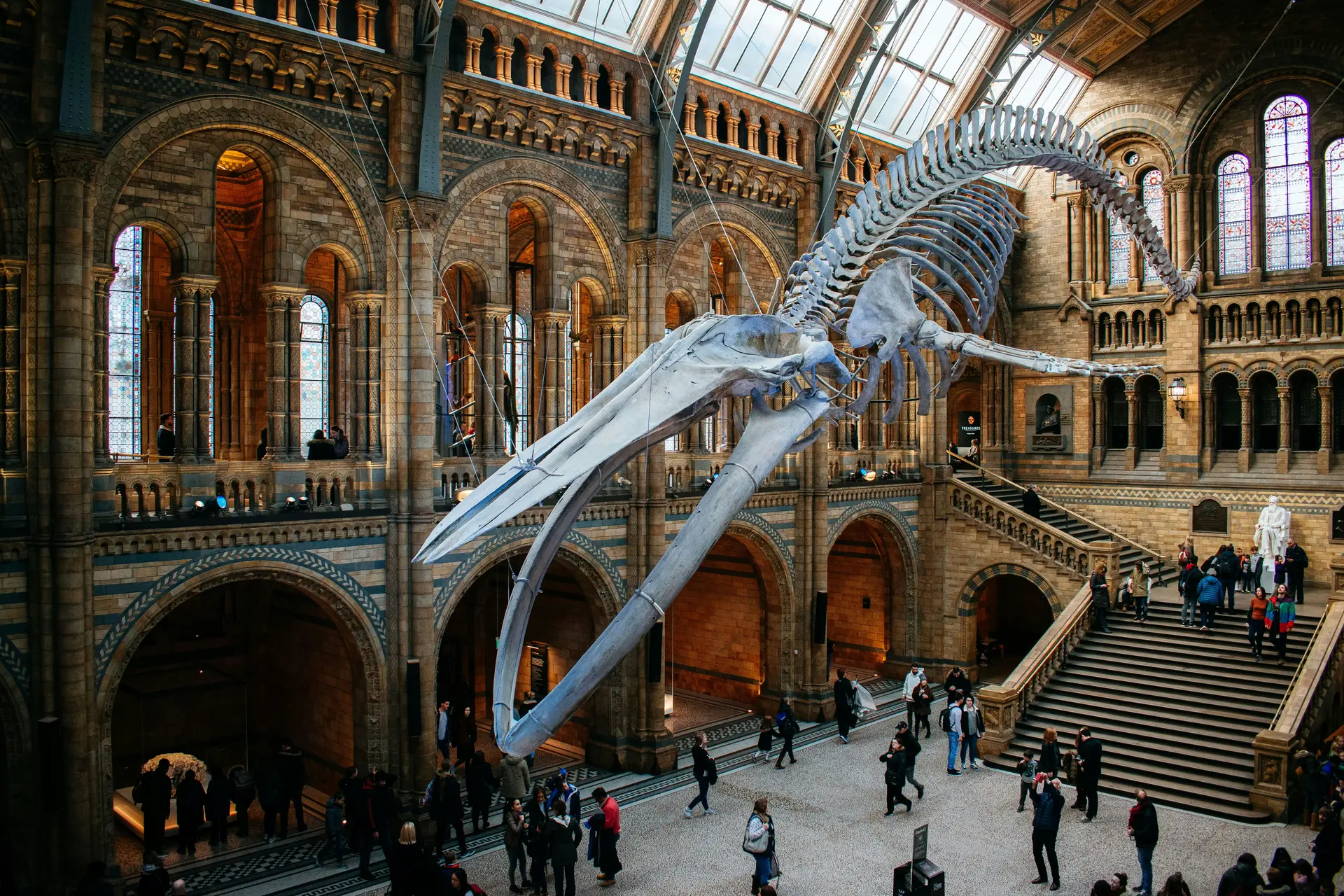
A real-life blue whale skeleton at the Natural History Museum in London. Photo by Bruno Souza.
A blue whale’s heart is truly a marvel of nature. It can weigh as much as 680 kilograms (1500 pounds) – roughly the size of a small car. The heart is so large that an average child could crawl through the whale’s arteries!
The sheer size of a blue whale’s heart is necessary to pump blood through their enormous bodies. In fact, blue whale hearts can beat as slowly as 5-6 times per minute when at rest but can increase their heart rate to as high as 25 beats per minute during intense physical activity, like swimming quickly or surfacing for air.
In addition to its massive heart, the blue whale has exceptionally large lungs. Their blowhole, located at the top of their head, can release a spout of mist up to 30 feet (9 meters) high, which helps expel the air from their lungs efficiently.
3. Orcas are highly intelligent and have cultural traditions
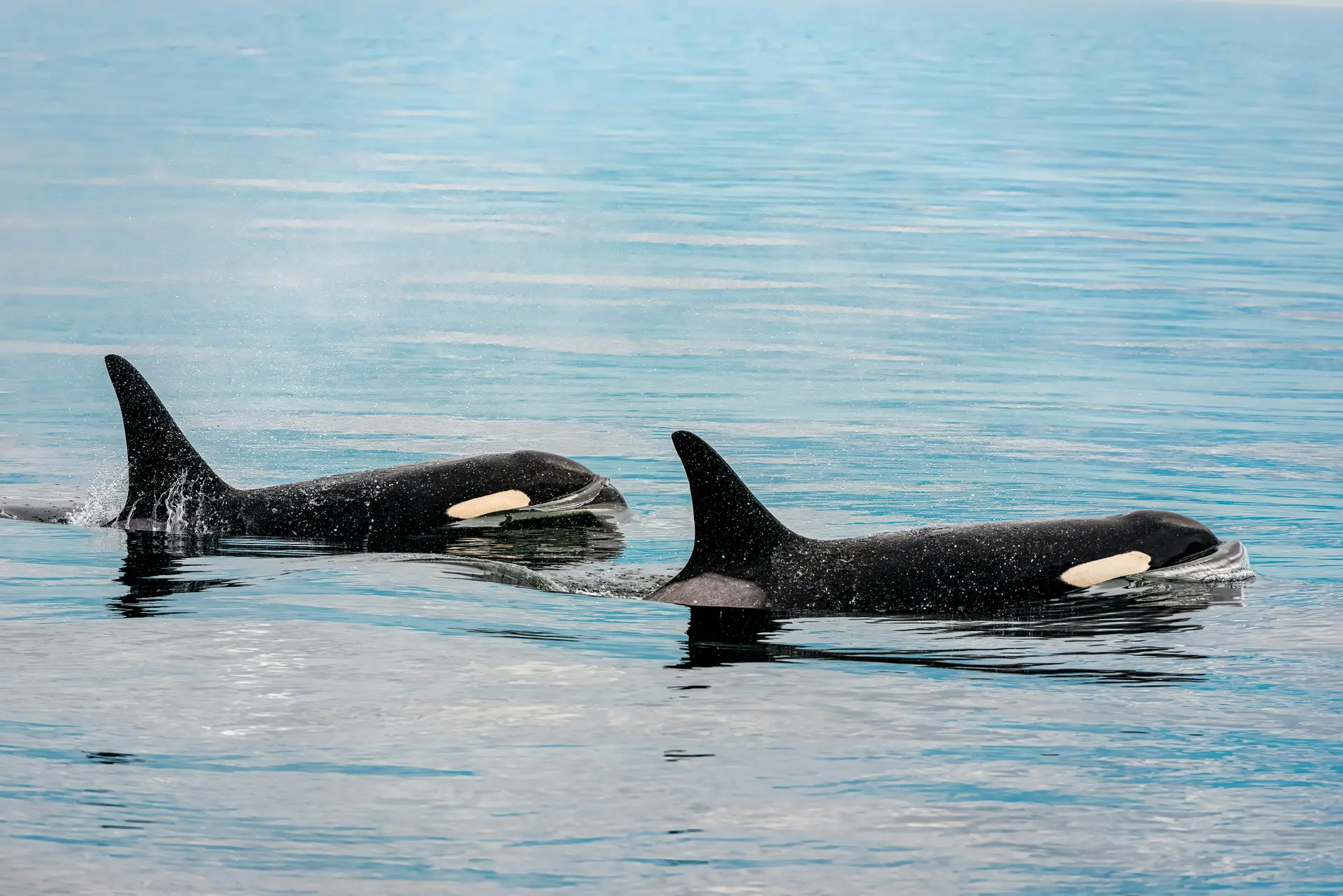
Majestic Orcas Gliding Through the Water. Photo by Stephen Walker
Orca whales are widely regarded as one of the most intelligent animal species on the planet. Their brain is among the largest of any animal in relation to body size, and they exhibit behaviours that demonstrate problem-solving skills, social learning, and self-awareness. Orcas are known to use tools and complex strategies to achieve their goals, such as working together to create waves that wash prey off ice floes, or ‘playfully’ tossing around seaweed or objects to practice coordination.
Orcas also exhibit cultural behaviours, which are learned behaviours passed from one generation to the next. For example, certain pods have distinct hunting techniques, such as the ‘beaching technique’, where orcas intentionally swim onto shore to catch seals or sea lions basking on the beach. These techniques are often unique to their group. This form of cultural transmission is essential for their survival and can only be passed down through social learning within the pod. Additionally, different pods of orcas may have varying dietary preferences, hunting methods, and even dialects of communication, suggesting that orcas have regional cultures.
4. Some whales experience menopause, just like humans
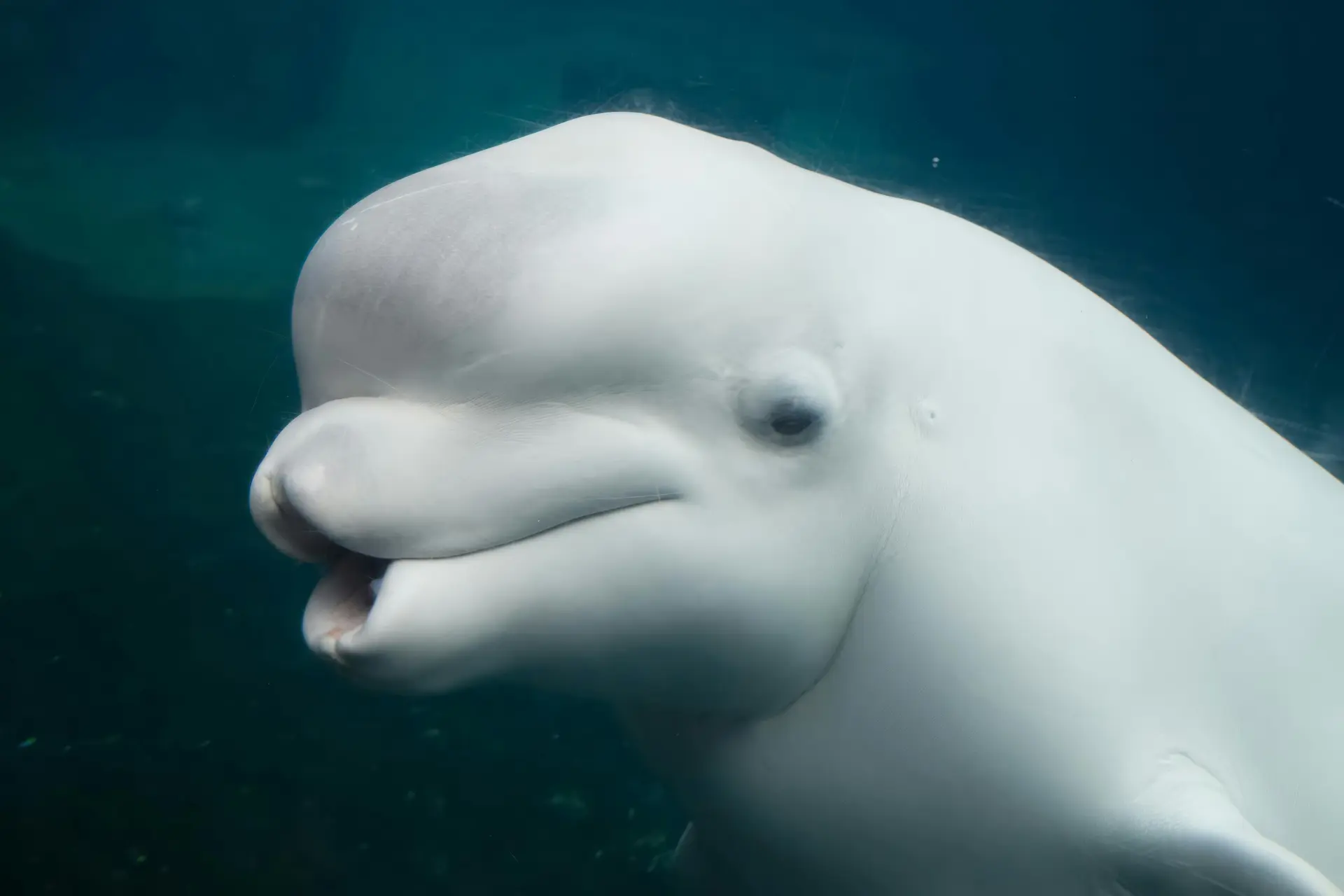
Menopause is rare among mammals, and beluga whales were only confirmed to experience it in 2018. Photo by Carol Highsmith
Menopause is typically associated with humans and some other primates, but did you know that around five species of toothed whales also experience menopause? This fascinating biological phenomenon has been observed in short-finned pilot whales, false killer whales, orcas, narwhals and beluga whales.
In these species, females stop reproducing around their 30s or 40s but can live several decades beyond their reproductive years. This post-reproductive phase is crucial for the survival of their pods, as older females often take on leadership roles as matriarchs, guiding the pod and passing down vital survival knowledge, such as migration routes and hunting strategies. This social structure, where older females help care for and protect the younger generations, is linked to kin selection, where stopping reproduction increases the survival chances of their offspring and grandchildren. The evolutionary advantage of menopause in these whales lies in maximizing reproductive success indirectly, enhancing the group’s stability and ensuring the pod’s overall fitness. This behaviour is a key factor in the social cohesion and long-term survival of these intelligent and social marine mammals.
5. A Narwhal’s tusk is actually a tooth
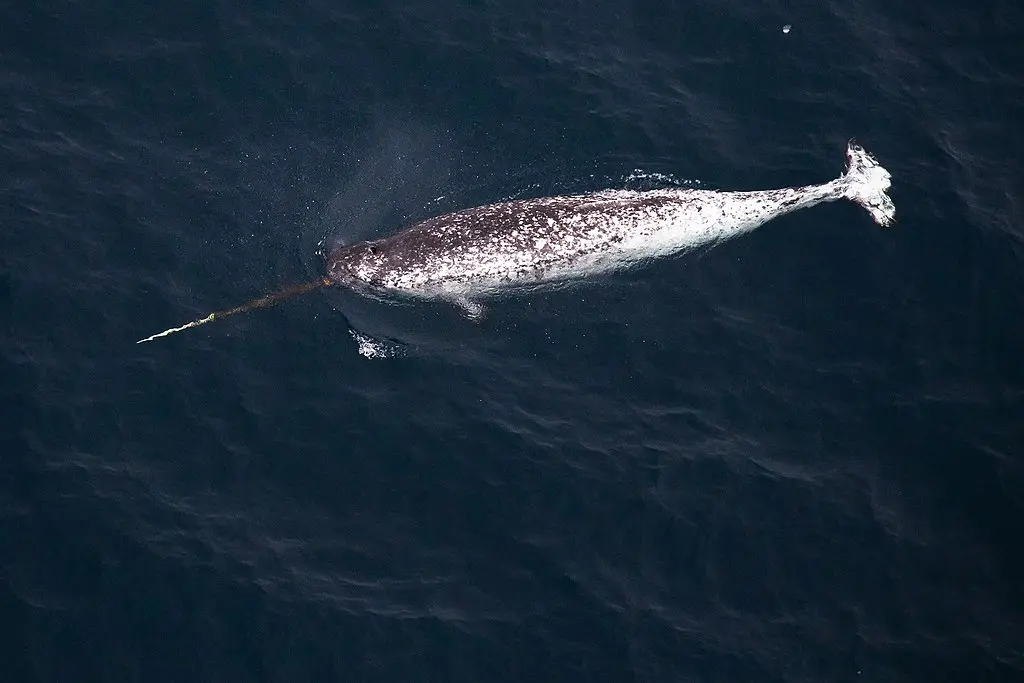
The ‘unicorn of the sea’ with its iconic spiralled tusk. Photo by PJSC Gazprom Neft, Russia.
The most famous feature of narwhals is their spiral tusk, which is actually an elongated tooth that can grow up to 10 feet (3 meters) in length, primarily in males. This tusk is a left canine tooth that grows through the narwhal’s upper lip, creating a corkscrew-like appearance. While the tusk’s exact function is still debated, researchers believe it plays a role in mating displays and possibly in dominance hierarchies, with males using their tusks to ‘joust’ or engage in physical contests to establish social rank. Some scientists also believe the tusk has sensory capabilities, as it is covered in millions of nerve endings, allowing narwhals to detect changes in water temperature, pressure, and salinity.
Interestingly, not all narwhals have tusks. Approximately 15% of female narwhals and some males are born without a tusk. In addition, while the tusk is a characteristic feature, some male narwhals have two tusks, though this is rare. The development and length of the tusk can vary significantly from one individual to another, adding to the mystique of this iconic feature.
6. Whales make nets out of bubbles to help them catch prey
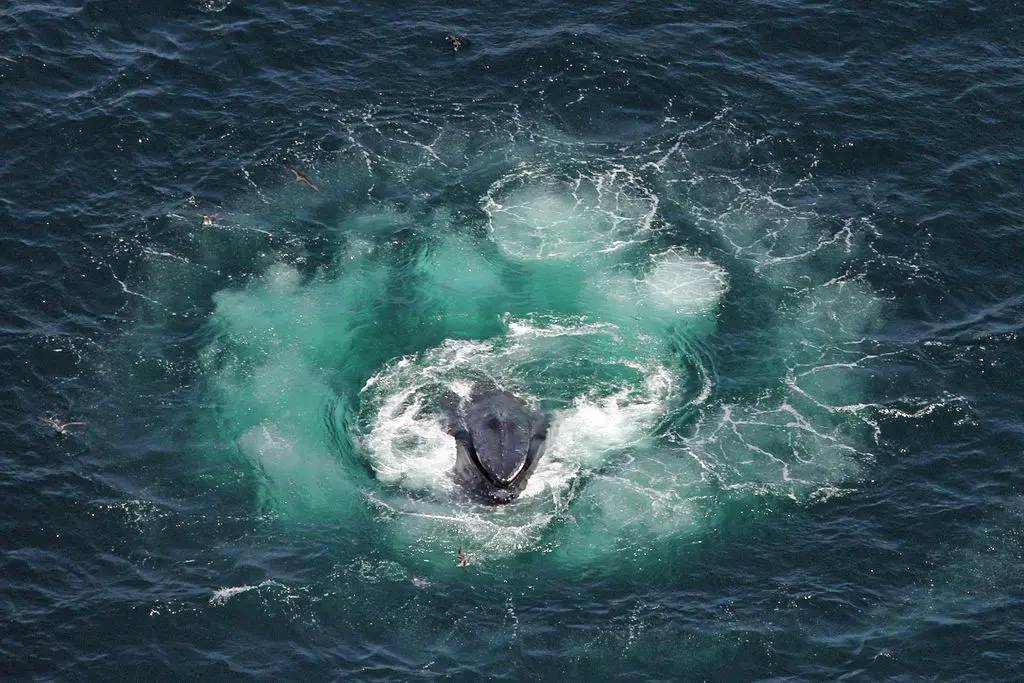
A humpback whale uses bubble net feeding to trap its prey in a swirling ring of bubbles. Photo by Christin Khan.
Bubble netting is a sophisticated and cooperative feeding technique used by certain species of whales, most notably humpback whales. In this behaviour, a group of whales works together to create a ‘net’ of bubbles around a school of fish or krill, trapping them in a concentrated area to make feeding more efficient. The process begins when the whales dive beneath the school of prey and swim in a spiral pattern while exhaling air through their blowholes, releasing bubbles that form a barrier around the prey. As the whales swim in a circular motion, the bubbles rise to the surface, forcing the fish or krill into a tighter ball. Once the prey is concentrated, the whales rise to the surface in unison, opening their mouths wide to engulf the trapped food in a single, coordinated gulp.
This technique requires sophisticated communication and coordination between the whales. Scientists have observed that specific groups of whales will work together repeatedly, suggesting they develop preferred hunting partnerships and may even pass this knowledge down through generations.
Interestingly, not all humpback whale populations use this technique – it appears to be a learned behaviour that’s particularly common among humpbacks in Alaska and other parts of the North Pacific. This suggests it’s a cultural behaviour that’s taught and learned rather than an instinctive one.
7. Whales communicate by song
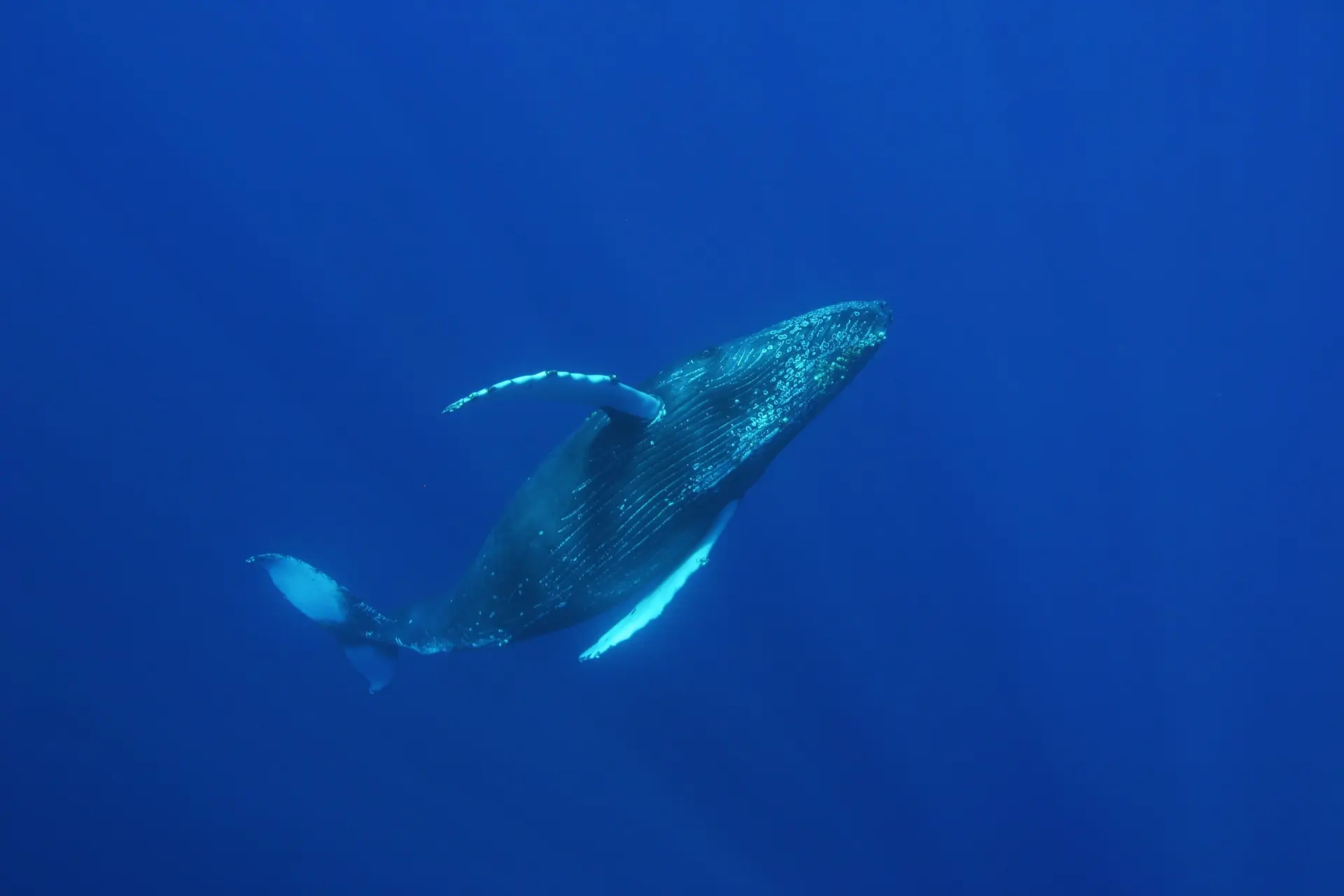
Humpback whale underwater observed by the National Oceanic and Atmospheric Administration (NOAA).
Whale song is a captivating and complex form of communication, most famously associated with humpback whales, though it is also present in other whale species like blue whales and gray whales. These songs are made up of a series of musical vocalisations, including moans, groans, whistles, and clicks, which can be repeated in specific patterns over long periods of time. Whale songs are most commonly heard during the breeding season, and they are believed to play a role in attracting mates, with males using the songs to communicate their presence and possibly their fitness to potential females. The songs can last from several minutes to hours, and remarkably, individual whales can create new variations of these sounds, passing them down or even adopting parts of songs from other whales in their population. Over time, songs can evolve, with new motifs and patterns emerging within the same population.
The remarkable thing about whale songs is their complexity and structure. Whale songs are not random sounds; they follow a clear pattern or structure that can be likened to a musical composition, with verses and phrases that repeat in cycles. These songs travel long distances through water, which is an excellent medium for sound transmission. The exact purpose of whale song is still not fully understood, but it is generally accepted that the songs serve as a form of social interaction and are primarily used during the mating season, where males compete to be the most impressive or dominant through their vocalisations.
8. Orca whales are actually dolphins
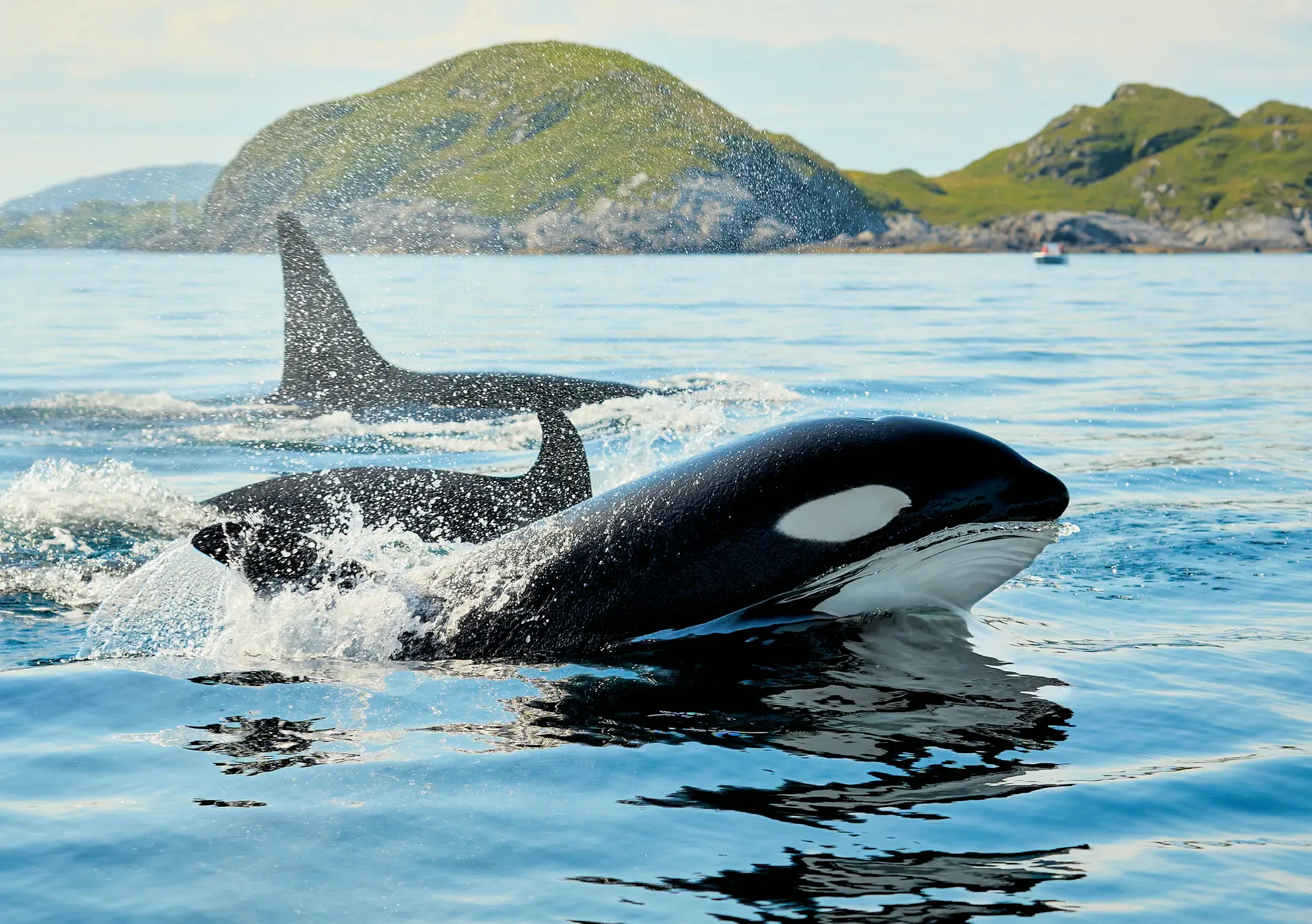
Orca family. Photo by Vidar Nordli-Mathisen.
Orca whales are often referred to as ‘killer whales’, but despite their common name, they are technically dolphins. Orcas belong to the family Delphinidae, which includes all species of dolphins, making them the largest member of the dolphin family. This classification is based on various anatomical and genetic characteristics that they share with other dolphins, such as their teeth (which are conical, unlike the flat teeth of baleen whales), their social structure (living in highly organised pods), and their communication methods (using a wide range of vocalizations, clicks, and whistles).
Orcas also have a similar body shape to other dolphins, with a streamlined body, dorsal fin, and flippers. While orcas are often mistaken for whales due to their size, their classification as dolphins reflects the broader taxonomic grouping they belong to, and they share many behavioural and physiological traits with other members of the Delphinidae family.
Conservation Challenges
Despite their remarkable adaptations and intelligence, whales face numerous challenges in today’s oceans. Climate change, ocean acidification, plastic pollution, and underwater noise pollution threaten their survival. While commercial whaling has largely ceased, the recovery of many whale populations remains precarious.
Looking to the Future
The story of whales is deeply intertwined with our own. As we learn more about these extraordinary creatures, we discover not just their incredible capabilities but also their vulnerability to human activities. Conservation efforts worldwide are working to protect whale populations and their habitats, but success depends on continued research, education, and global cooperation.
Understanding and protecting whales isn’t just about preserving magnificent creatures – it’s about maintaining the health of our oceans and, by extension, our planet. As we continue to study these remarkable animals, they remind us of the wonder and complexity of life on Earth, and our responsibility to protect it.
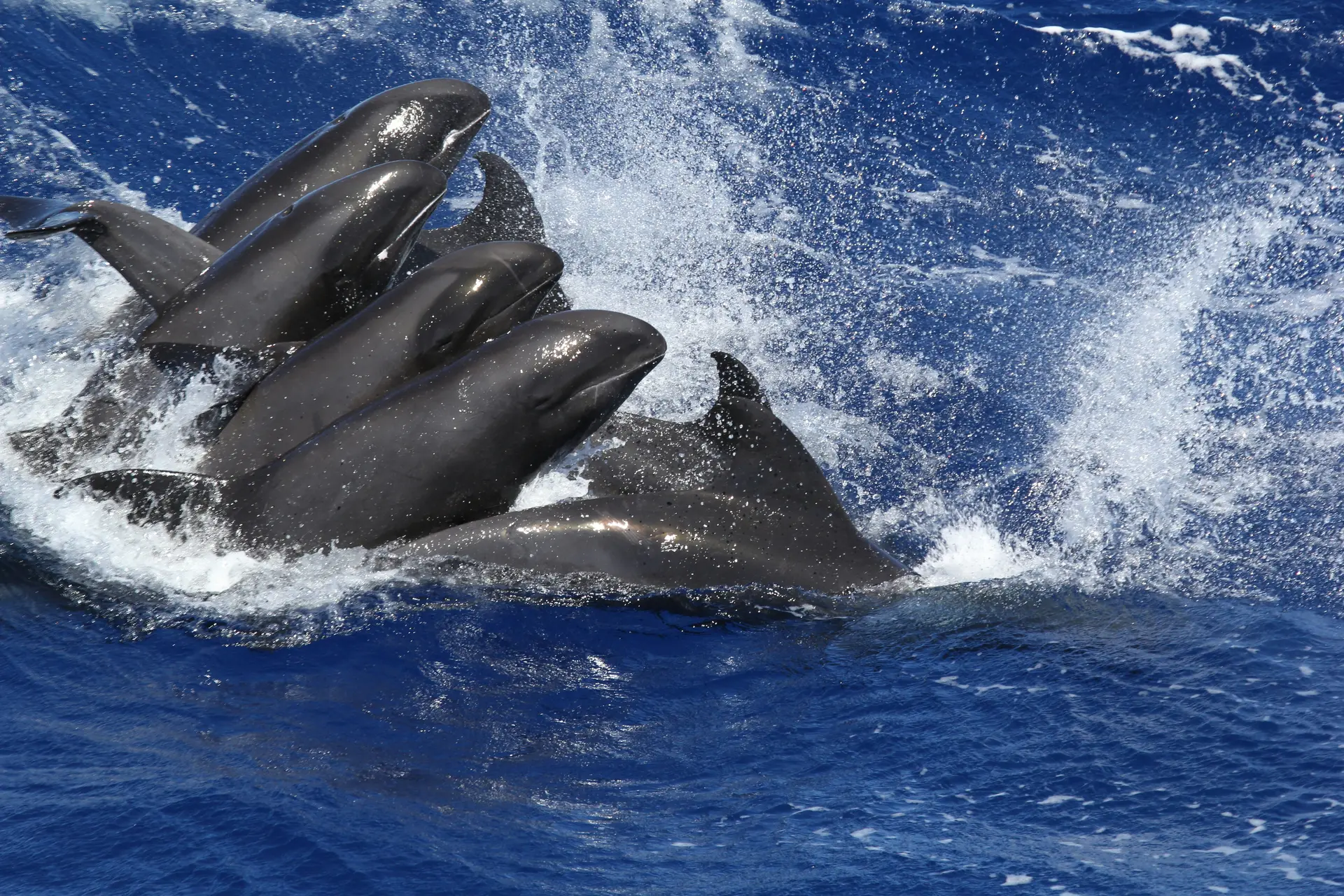
Melon-headed Whales observed by the National Oceanic and Atmospheric Administration (NOAA).
Thanks for joining me on this deep dive into the world of whales! If you found this post fascinating, check out my whale designed silver jewellery in my shop.
Feel free to share this post, and let me know in the comments which whale fact surprised you the most. Until next time, stay curious and keep exploring the wonders of the ocean!

Thanks for reading…
Here are a few things you might like to check out:
- My ethical policy — Learn about how I make my jewellery, my packaging, and my sustainable approach.
- About me — Find out more about me and how I started Elouise Makes.
- Shop the collection — Browse my animal-inspired recycled silver jewellery.
- Caring for your silver jewellery — Tips on keeping your jewellery looking its best.
- My shipping policy — Everything you need to know about delivery and returns.
- Find me on Instagram — Follow for updates, jewellery photos, and fun animal facts.
The best way to hear from me is to sign up to my newsletter for special offers and updates. I only send one per month, so there’s no spam!
